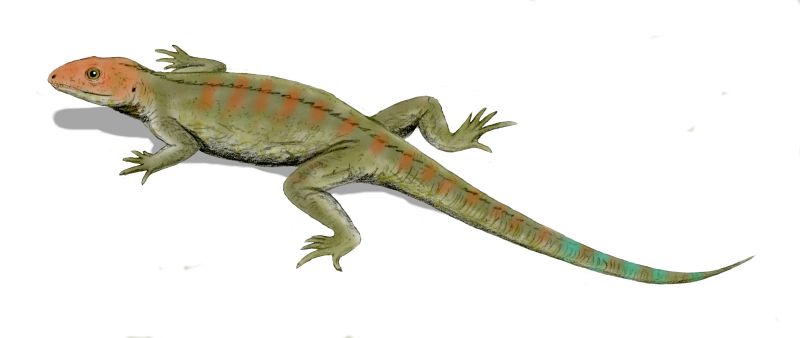Hylonomus is recognized as one of the earliest-known reptiles, dating back to the Late Carboniferous period, around 315 million years ago.

| Meaning | Woodland dweller [Hylo-nomus] |
| Pronunciation | hy-LOH-no-mus |
| When: | Carboniferous (about 312 million years ago) |
| Where: | North America (Canada) |
| What: | Reptile (small, insectivorous) |
| Weight: | Estimated around 20 grams (0.7 ounces) |
| Length: | Approximately 20 cm (8 inches) |
| Diet: | Insectivorous (ate insects) |
| Discovered: | First described by John William Dawson in 1859 |
It represents an important transition in vertebrate evolution from amphibians to reptiles, specifically as one of the earliest amniotes—animals capable of laying eggs on land, independent of water.
Hylonomus was relatively small, measuring about 20-30 centimeters (8-12 inches) in length, with a slender body and long tail.
It likely had a lizard-like appearance and was adapted for terrestrial life, although it probably spent some time near water as well.
Its diet consisted of small invertebrates and possibly small vertebrates, reflecting its role as an early predator in its ecosystem.
Fossils of Hylonomus have been discovered primarily in Canada, particularly in Nova Scotia.
Its significance lies in its position at the dawn of reptilian evolution, marking an important step towards the dominance of reptiles on land during subsequent geological periods.
